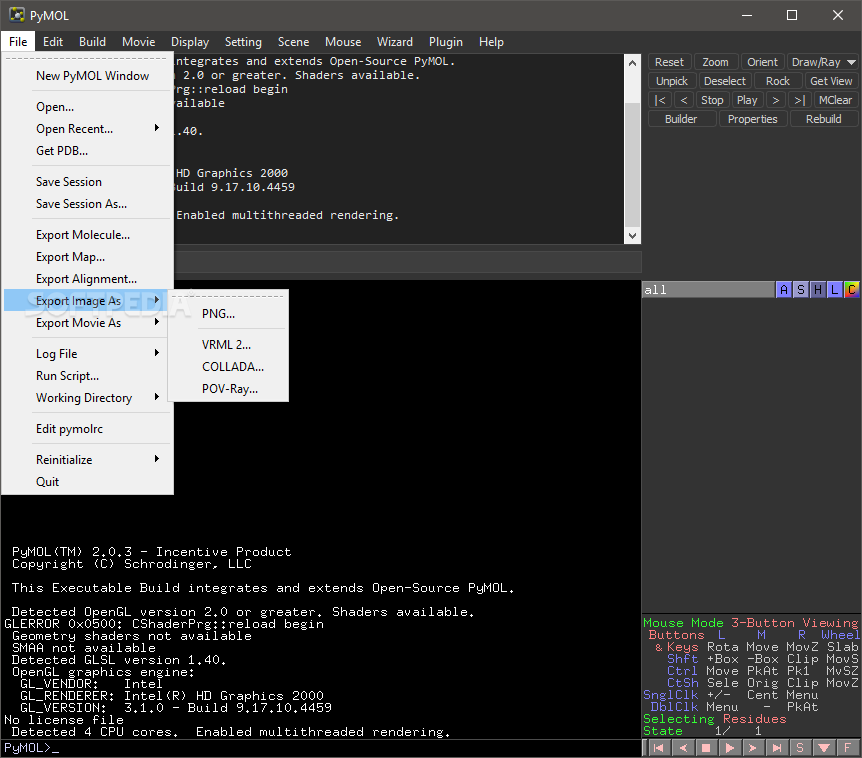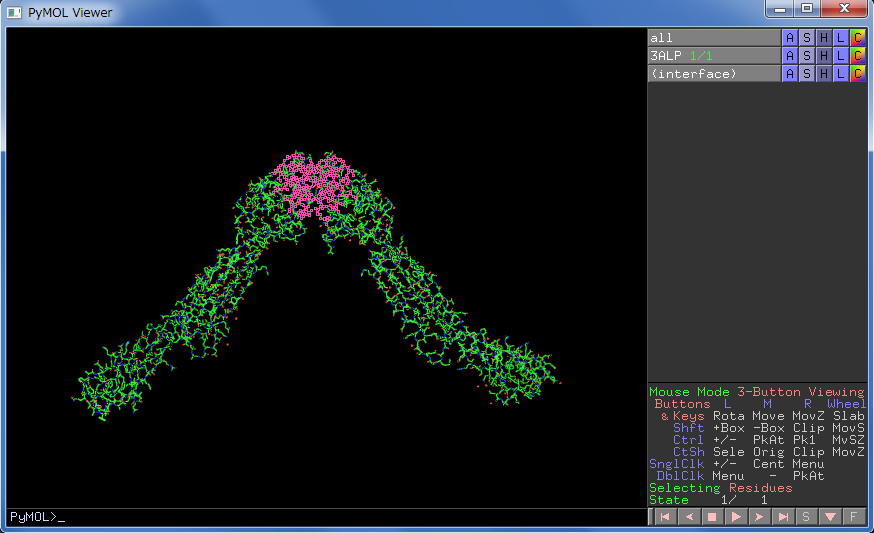

- #PYMOL TUTORIAL WIKI HOW TO#
- #PYMOL TUTORIAL WIKI INSTALL#
- #PYMOL TUTORIAL WIKI SOFTWARE#
- #PYMOL TUTORIAL WIKI CODE#
#PYMOL TUTORIAL WIKI CODE#
The code BigDFT is available in ABINIT v5.5 and higher but can also be downloaded in a standalone version from the website. GTH or HGH pseudopotentials are used to remove the core electrons. Wavelets form a real space basis set distributed on an adaptive mesh (two levels of resolution in our implementation). Homepage: URL: Keyword:physĭescription: BigDFT is a DFT massively parallel electronic structure code using a wavelet basis set with the capability to use a linear scaling method. Louie, BerkeleyGW: A Massively Parallel Computer Package for the Calculation of the Quasiparticle and Optical Properties of Materials and Nanostructures, Comput. Jack Deslippe, Georgy Samsonidze, David A. Louie, Electron-hole excitations and optical spectra from first principles, Phys. Louie, Electron correlation in semiconductors and insulators: Band gaps and quasiparticle energies, Phys. We ask that you please cite the following papers when using results obtained from the BerkeleyGW package: - Mark S.
#PYMOL TUTORIAL WIKI SOFTWARE#
The Type column shows the software tagged as: ai (artificial intelligence), bio (biology, bioinformatics), chem (chemistry), geo (earth sciences), io (input/output), math (mathematics), mpi ( MPI), phys (physics and engineering), tools (languages and libraries), vis ( visualization).ĭescription: The BerkeleyGW Package is a set of computer codes that calculates the quasiparticle properties and the optical responses of a large variety of materials from bulk periodic crystals to nanostructures such as slabs, wires and molecules. In particular, sorting by software type might be of interest. Click the double arrows in the column heading to sort in ascending or descending order for a given column. If more extensive Compute Canada documentation about a package is available, there will be a link in the Documentation column. Click on the corresponding link in the Description column for a list of prerequisites and brief notes about the software. In more complicated cases, some prerequisite modules may also need to be loaded. In simple cases, the module name listed in the Module column can be used with the module load command to configure your environment. The table below lists software for which an environment module has been installed on Compute Canada systems. However, you can still have access to the modules below on Niagara if you first run the following ~]$ module load ~]$ module load StdEnv The Niagara cluster is an exception to this page and more information about the software available on this cluster can be found on the Niagara Quick Start Guide.

#PYMOL TUTORIAL WIKI HOW TO#
See the R and Perl pages for instructions on how to do so. We recommend installing them in your personal or group file space.
#PYMOL TUTORIAL WIKI INSTALL#
For instructions on how to install or list Python packages, see the Python page. They are instead provided as binary wheels, stored on the Compute Canada systems under /cvmfs//custom/python/wheelhouse/. Most Python modules are not installed as (Lmod) modules.Here are a few things to know about the available software: Note that some prerequisite modules are loaded by default. See Using modules for more on how to use the Lmod module system. Except for basic system programs, you access most software by loading a module.


 0 kommentar(er)
0 kommentar(er)
